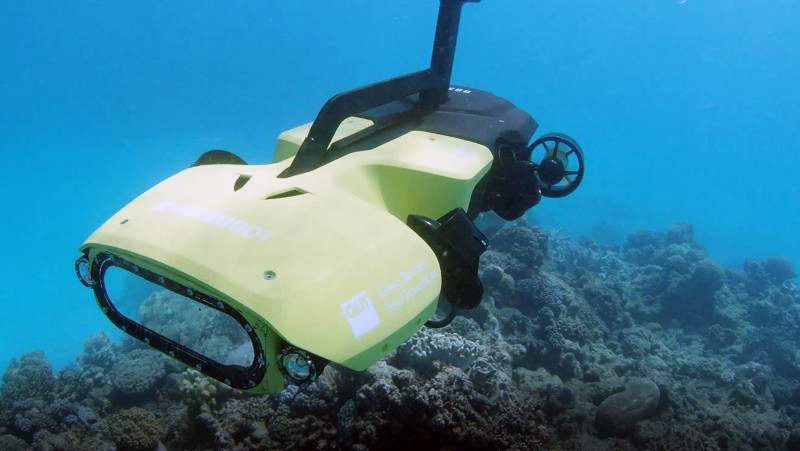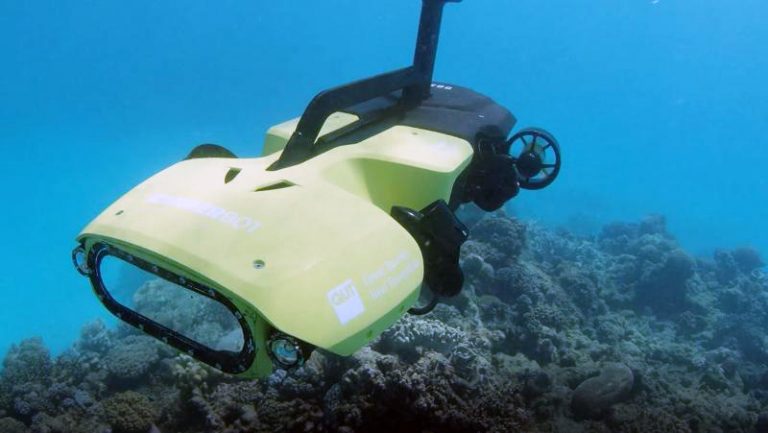DIVING NEWS
‘Killer robot’ turns life-giver

Picture: QUT.
RangerBot, the experimental underwater drone that has been patrolling Great Barrier Reef corals and delivering lethal injections to predatory crown-of-thorns starfish, has been re-purposed to repopulate the reefs in its new guise – as LarvalBot.
The “killer robot”, described on Divernet in September, was developed at Queensland University of Technology (QUT).
Now it is set to “mother” hundreds of millions of baby corals in a special delivery coinciding with the GBR annual coral-spawning event in late November.
9 November 2018
Using a technique called “larval restoration”, the plan is to harvest hundreds of millions of spawn from corals that have survived the two recent mass GBR bleaching events, and rear these into baby corals in mass quantities inside large floating enclosures on the reef
It will take five to seven days for these to develop, after which the semi-autonomous robot will help to deliver the reared larvae onto targeted reefs. They will also be distributed as “larval clouds” on damaged reef areas, on a larger scale than has previously been possible, with the intention of speeding up the recovery of damaged eco-systems.
Prof Matthew Dunbabin of QUT’s Institute for Future Environments, who led the robotics team that developed LarvalBot, has teamed up with Southern Cross University Prof Peter Harrison, who pioneered the coral-restoration technique.
“We aim to have two or three robots ready for the November spawn,” says Prof Dunbabin. “One will carry about 200,000 larvae and the other about 1.2 million.” He reckoned that each drone could cover 1500 sq metres per hour.
The researchers claim that the new approach will be 100 times more effective than previous reseeding methods
“The surviving corals will start to grow and bud and form new colonies, which will grow large enough after about three years to become sexually reproductive and complete the life-cycle,” says Prof Harrison.
“This has the potential to revolutionise coral restoration on reefs worldwide,” says Prof Harrison. The project is funded by the Great Barrier Reef Foundation.
SPIDER POWER:
Even the most severely damaged coral reef can be repaired using “spider” technology, according to a recent University of California study. A team led by maine biologist Susan Williams claims that wide-scale devastation caused by dynamite-fishing or coral-mining can be reversed cost-effectively using their new technique.
Between 2013 and 2017 the team attached coral fragments to 11,000 small hexagonal structures they called spiders across 5 acres of Indonesian reef. Live coral cover was reported to have increased from less than 10% to more than 60%, at a cost of about US $25 per square metre.
The scientists were surprised to find that although massive coral-bleaching occurred elsewhere in the world from 2014 to 2016, bleaching in the rehabilitation area was less than 5% – despite warm water conditions known to stress corals. Their study is published in Restoration Ecology.

